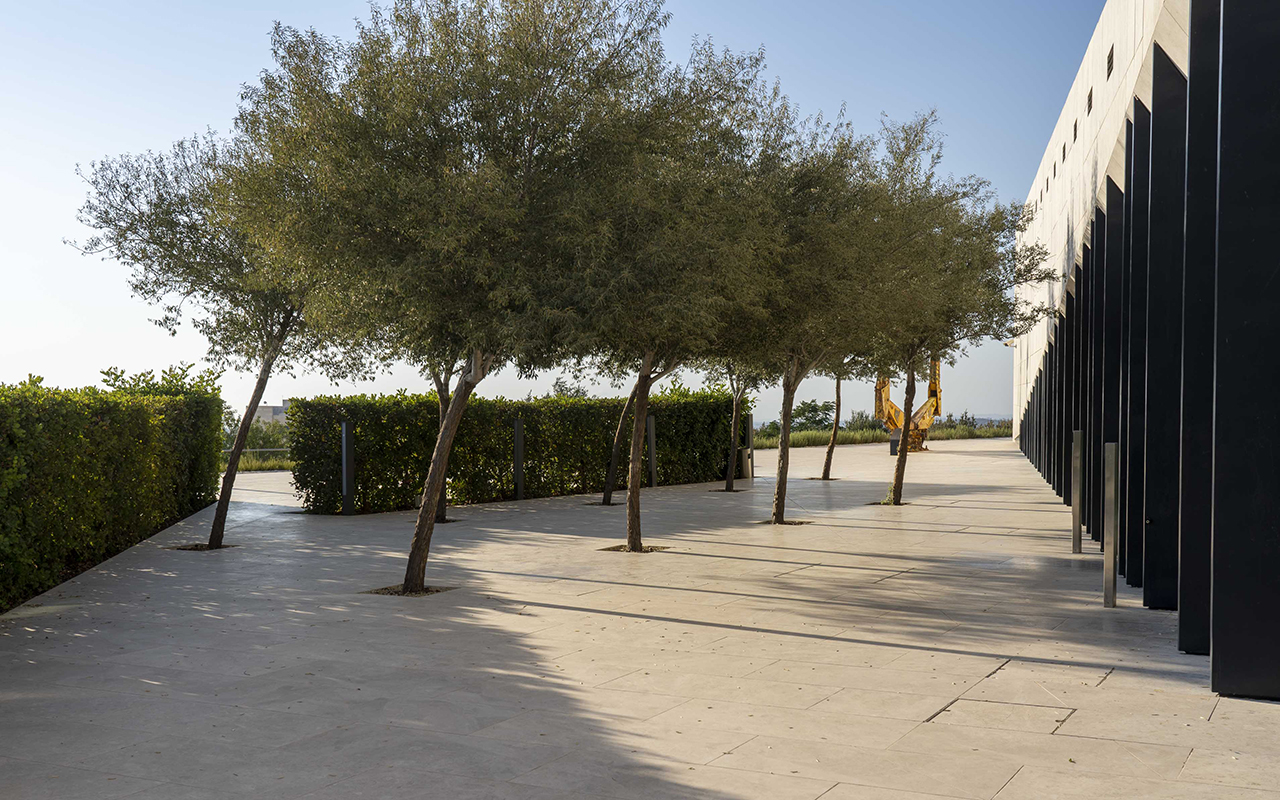
Russian Olive
Elaeagnus angustifolia L.
Elaeagnaceae
In its scientific name, elaea means oil and agnus indicates purity because of the tree’s resemblance to the olive tree; angustifolia refers to its narrow leaves.
The Russian olive is a deciduous tree or shrub, depending on how it is trained and pruned. It has thorny brown branches studded with silvery scales; its alternate leaves are a pale silvery green. The yellow flowers are exceptionally fragrant and form in clusters of one to three blossoms. Its edible, sweet fruit resembles the olive. In Palestine, the Russian olive grows naturally in the Hula Valley region and the Palestinian coast (Acre), but it is a threatened species there, for its numbers are steadily declining; however, its distribution in gardens is common.
The oil of the Russian olive is used in perfumes, while its resin is used in printing, and its wood for the manufacture of poles. Further, the roots of the plants support a set of bacterial species that enables plants to fix nitrogen and turn it into a nutrient. Thus, using it for fencing or screening land is also beneficial to other plants. In Iran, the powdered dried fruit, mixed with milk, is used to treat arthritis. In the traditional Persian New Year, Nowruz, Russian olive is consumed as part of the traditional meal.
Source: A Garden Among the Hills: The Floral Heritage of Palestine. © The Palestinian Museum 2019